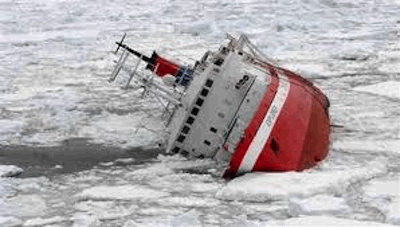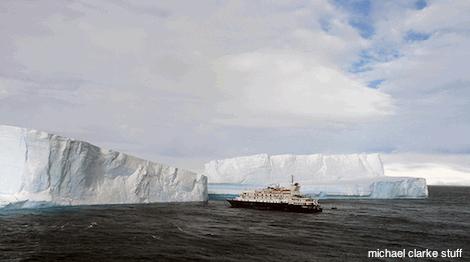|
Arctic Icebergs, Massive and Majestic Islands of Ice, Born of Ancient Fresh Water Glaciers.
Several of the iceberg images on this page were taken by me personally. Some were taken well above the Arctic Circle in Baffin Bay, others off the coast of Labrador and farther south on the east coast of Newfoundland. There is a beauty about these marvels of nature that is difficult to explain, however, for the seafarer they can soon become a source of torment and danger. They can make navigation at night especially hazardous with growlers and bergy bits being difficult to see on radar, especially in rough seas. Upon colliding with these pieces of ice, many a vessel have been damaged and some damaged so severe that the vessel itself has been lost often with the loss of life.
Icebergs can be massive weighing up to several hundred thousand tons each. Because of the displacement of icebergs only approximately 11% of the berg is above water. (iceberg ice weights about 920kgs. per cubic meter and seawater about 1025kgs. per cubic meter) Running a ship into an iceberg can be similar to running into a solid rock cliff. Physics tells us that two objects cannot occupy the same place at the same time. When this is attempted with a ship and an iceberg there will be damage, and usually the ship will get the worst of the deal.
Monitoring Arctic icebergs on the east coast of Canada is more vital now than ever with offshore oil production platforms and exploratory drilling rigs in operation. In this area icebergs are tracked well ahead of any possible collision with one of those installations, and preventative measures are enacted by supply vessels. Those vessels will tow or push with water jets the bergs out of any collision path with an oil platform. Because of the southward movement of the Labrador current many icebergs from the Arctic will pass by the East Coast of Newfoundland and Labrador each year. Finally making their way south over the Grand Banks where they meet the warm Gulf Stream current coming from the south and melt. 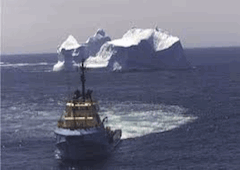
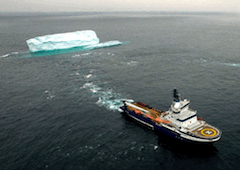
Below is a copy of that table. Click on the table for a link to the International Ice Patrol website.
For the real adventurous there is no better place on earth to view these marvels of nature than in Baffin Bay above the Arctic Circle. In this area the bergs that have calved from the glaciers on Greenland and Ellesmere island have not had time to lose much of their size due to melting and breaking up, also known as foundering. There are two communities on the eastern side of Baffin Island they are, Qikiqtarjuaq (aka Broughton Island) and Clyde River. From those communities a short boat ride will place you in waters that contain natural beauty which most of the inhabitants of earth has never seen.
To be there and smell the sea air, listen to the water crashing against the ice, hear the various seabirds squawk and sing. To listen to a whale blow air from his lungs as he prepares for another dive, and to watch a mama polar bear and her cub prepare a place to sleep for the night on the edge of a tabular iceberg. All your senses are at work in this pristine environment where the beauty and power of nature are on display in a wild kingdom of mystery, wonder and ice. 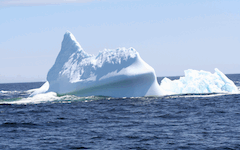
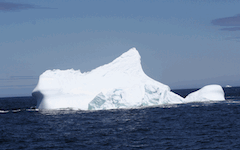
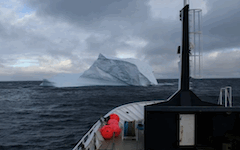
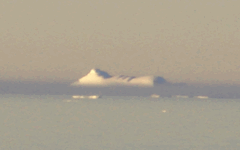
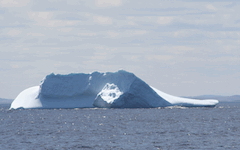
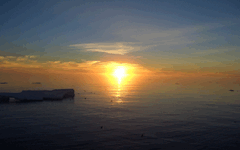
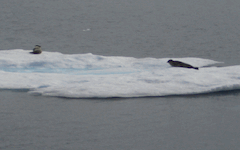
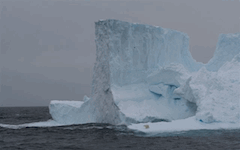
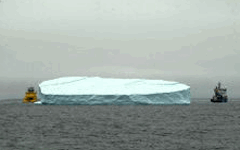
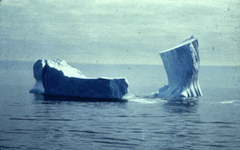
Return from Iceberg to Homepage
|
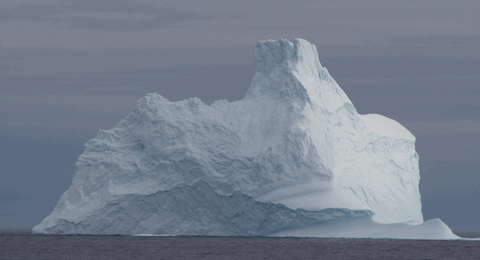
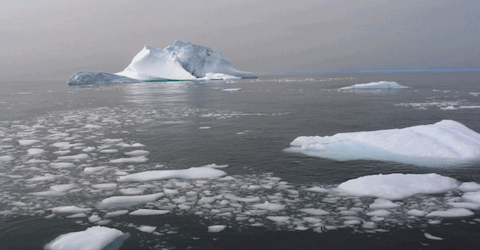
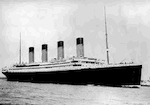 One of the most famous collisions with an iceberg took place southeast of Newfoundland at 2340hrs. on April 14, 1912. The
One of the most famous collisions with an iceberg took place southeast of Newfoundland at 2340hrs. on April 14, 1912. The 